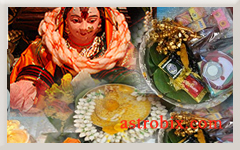Shri Sorimuthu Aiyanar Temple is situated between Papanasam and Karaiyar Dam. It is located on the bank of River Tamaravaruni in Ambasamudram Taluk in Nellai District. It is one of the first Aiyappan temple of South India. The presiding deity of the temple is Mahalinga Swamy. Muthianar with his two consorts Poorna and Pushkala is the main guard of worship, along with his lieutenants Sangili Bhootham, Thoosi Madan, Thulasi Madan, Pechi, Isakki, Pattavarayan. The term ‘Pon Soriyum Muthian’ means the Lord who down pours golden-rain in the plateau. As the temple happens to be the
History of Shri Sorimuthu Aiyanar Temple
Muthupattar was a Brahmin who lived in North India. Once his brothers were discussing about Ramayana. During the course of the discussion, the brothers asked Muthupattar about the relationship between Rama with Sita. Surprisingly, Muthuputtar said Uncle. Beaten by the brothers for his ignorance about the epic story, he went to Pothigai hills. He lost himself to the two beautiful daughters of Valai Pagadai belonging to the backward community. Since community was the challenge to marry, he got himself transformed as a member of their community. Unfortunately, on the conjugal night a cow was stolen and Muthupattar went in search of the cow. On his way he was killed in a quarrel. His wives also embraced death along with him. As per the legends, Muthupattar himself came out as Sorimuthu Aiyanar.
Significance of Shri Sorimuthu Aiyanar Temple
Many families worship Sorimuthu Aiyanar as their family deity. Those seeking child boon and relief from spells and evil effects come here. Those facing litigations and court problems place their prayers to Sorimuthu Aaiyanar. The place also serves as a health resort as it is in pleasant environment. People offer chappals to one deity here named Valai Pagadai, a strange custom followed here. Other usual rituals as abishek and archanas also are followed.as feeding visitors (Annadhanam).
Significance and Festivals of Shri Sorimuthu Aiyanar Temple
Five days of Ashada Amavasya period are celebrated with high enthusiasm. Eighteen warfare items are displayed during this festival. People from all over the world visit the temple on Thai and Adi Amavasya (new moon) days. Also all Amavasya days are observed with full devotion in the temple. People book the tents in the temple in advance. People bring with them all provisions for cooking to fulfill their prayer commitments.


 Sage Chayavana was born to Sage Bhrigu and Puloma. Sage Chayavana is counted among great saints who contributed significantly in the history of Hinduism. His thoughts and beliefs were adopted and respected by everyone. He re-defined Astrology and introduced many other aspects to it. His texts and books helped knowing astrology and life in a better way.
Sage Chayavana was born to Sage Bhrigu and Puloma. Sage Chayavana is counted among great saints who contributed significantly in the history of Hinduism. His thoughts and beliefs were adopted and respected by everyone. He re-defined Astrology and introduced many other aspects to it. His texts and books helped knowing astrology and life in a better way.